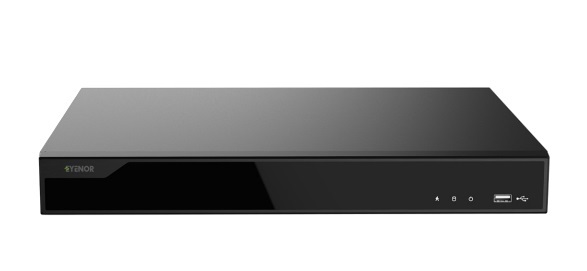Introduction
When it comes to setting up a surveillance system, many people assume that a Network Video Recorder (NVR) is essential. But is it? Can CCTV work without an NVR? The answer is a resounding yes. Thanks to advancements in technology, there are now several alternatives that allow for effective surveillance without the need for an NVR. Whether you’re a homeowner looking for a simple security solution or a business owner seeking flexibility, understanding these options can help you make an informed decision.
Table of Contents
Understanding CCTV Systems
Closed-Circuit Television (CCTV) systems are used to monitor and record activities in various settings. Traditionally, these systems relied on NVRs or DVRs to store footage. However, with the evolution of technology, modern CCTV systems offer more flexibility and options.
The Role of NVRs in Surveillance
An NVR is a device that records video footage from IP cameras over a network. It stores and manages the footage, allowing for easy access and playback. While NVRs are effective, they can be expensive and may not be necessary for all setups.
Alternatives to NVRs
a. Standalone CCTV Systems
Standalone CCTV systems operate independently without the need for an NVR. These systems often include cameras with built-in storage or the ability to connect to cloud services. They are ideal for small-scale surveillance needs.
b. DVR vs. NVR: A Comparison
While both DVRs and NVRs serve to record video footage, they differ in how they process and store data.
- DVR (Digital Video Recorder): Works with analog cameras and processes video data at the recorder.
- NVR (Network Video Recorder): Works with IP cameras and processes video data at the camera, then transmits it to the recorder.
Choosing between the two depends on the type of cameras you have and your specific needs.
Wireless CCTV System Options
Wireless CCTV systems offer flexibility in installation and are ideal for locations where wiring is challenging. These systems can connect to Wi-Fi networks and often support remote viewing through mobile apps.
PoE Cameras Without NVRs
Power over Ethernet (PoE) cameras receive power and transmit data through a single Ethernet cable. They can connect directly to network switches or routers, allowing for recording on local devices or cloud storage without an NVR.
Mobile CCTV Setups
Mobile CCTV setups involve using smartphones or tablets to monitor and control surveillance cameras. With the appropriate apps, users can view live feeds, receive alerts, and manage settings remotely.
Remote Viewing Without NVRs
Modern cameras often support remote viewing capabilities without the need for an NVR. By connecting to the internet, users can access live feeds and recorded footage from anywhere using mobile devices or computers.
Home Security Without NVRs
For homeowners, setting up a security system without an NVR is both cost-effective and straightforward. Options include cameras with built-in storage, cloud-based solutions, and wireless systems that offer easy installation and management.
Setting Up an NVR-Free Surveillance System
- Choose Compatible Cameras: Select cameras that support local or cloud storage.
- Connect to Network: Ensure cameras are connected to your Wi-Fi or Ethernet network.
- Configure Storage Settings: Set up storage preferences, whether local or cloud-based.
- Install Monitoring Apps: Use manufacturer-provided apps for remote access and management.
- Test the System: Ensure all components function correctly and adjust settings as needed.
Considerations and Limitations
- Storage Limitations: The storage capacity of cameras without NVRs can be limited, especially when using SD cards or local storage. If your camera’s storage is full, it may overwrite older footage.
- Internet Dependency for Cloud Storage: Cloud-based solutions require a stable internet connection. If your internet goes down, your camera’s footage might not be uploaded or accessible remotely.
- Security Concerns: Storing surveillance footage on the cloud or in wireless setups can raise security concerns, especially if the storage provider’s security isn’t robust. Always use strong encryption and ensure your devices are secure.
- Technical Setup: Some of the NVR-free options require a bit more technical setup, especially if you’re setting up cloud services or edge storage. You may need to research how to configure your system correctly or rely on professional installation.
Conclusion
To answer the initial question: Yes, CCTV can absolutely work without an NVR. In fact, there are many viable alternatives available for modern surveillance setups, whether it’s standalone CCTV systems, cloud-based storage, or wireless options. Each option comes with its own advantages and limitations, and the best choice depends on your specific needs, such as ease of installation, budget, and storage capacity. If you’re interested in learning more or shopping for cameras, you can check out CCTV options here and find solutions tailored to your home or business.
FAQs
Yes, many IP cameras support local storage options, like SD cards, or can upload footage directly to cloud services without needing an NVR.
DVRs are used with analog cameras, while NVRs work with IP cameras. NVRs process video data at the camera level, whereas DVRs process data at the recorder.
You can use IP cameras with local storage or cloud-based storage options. Wireless setups and mobile apps allow you to view footage remotely without an NVR.
Edge storage refers to storing video footage on the camera itself or on nearby devices, reducing the reliance on centralized systems like NVRs.
Yes, wireless CCTV systems can record to SD cards, local storage, or cloud storage, eliminating the need for an NVR in many setups.





